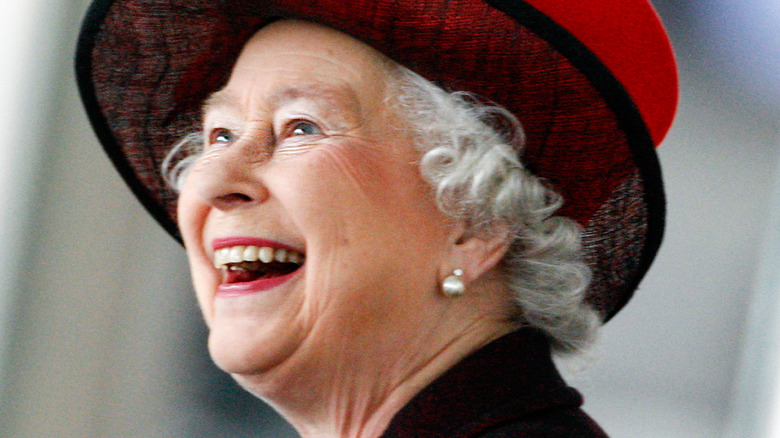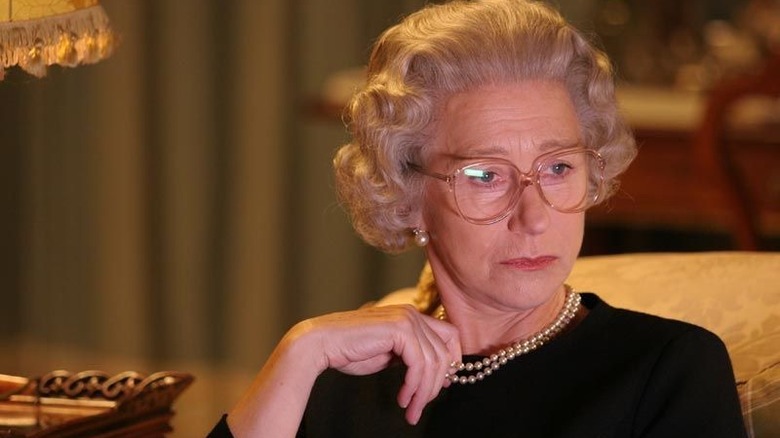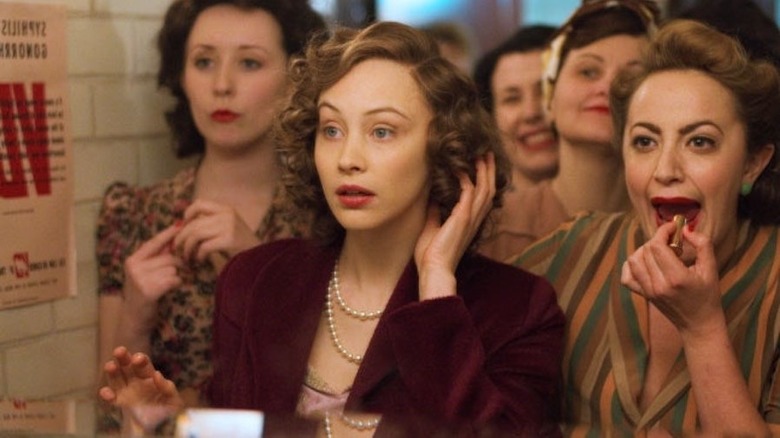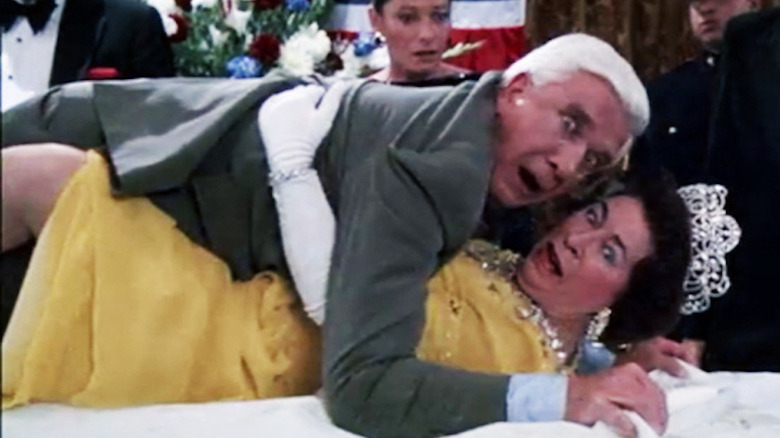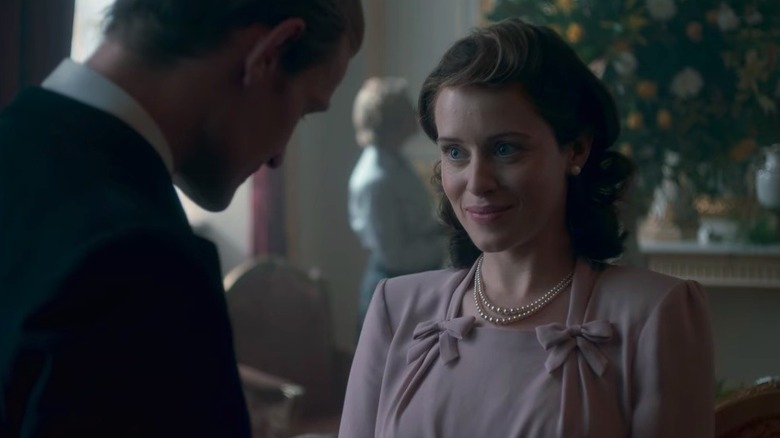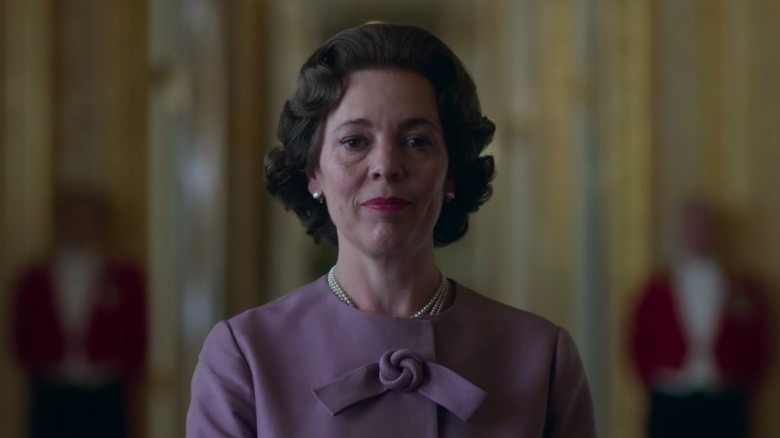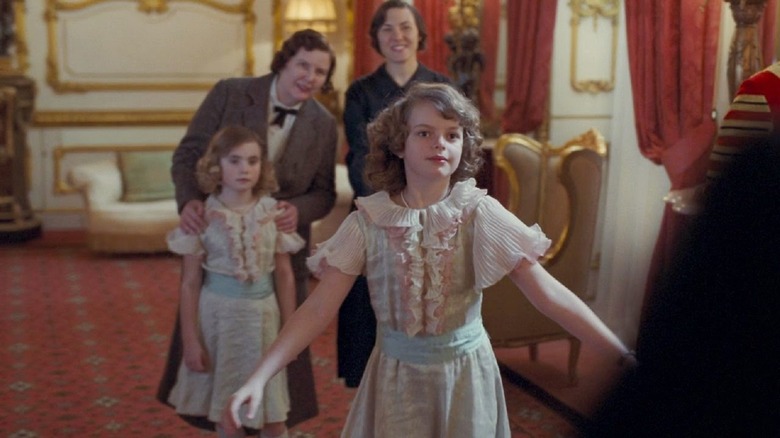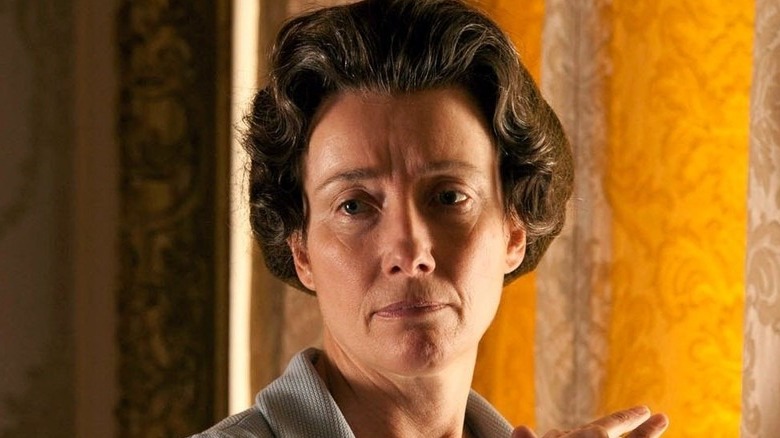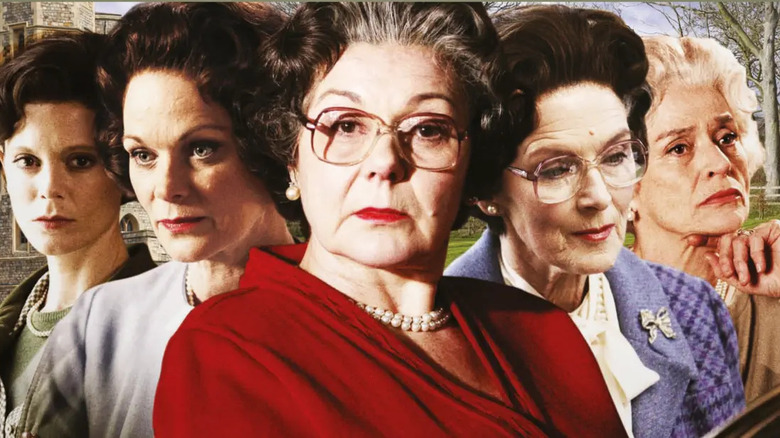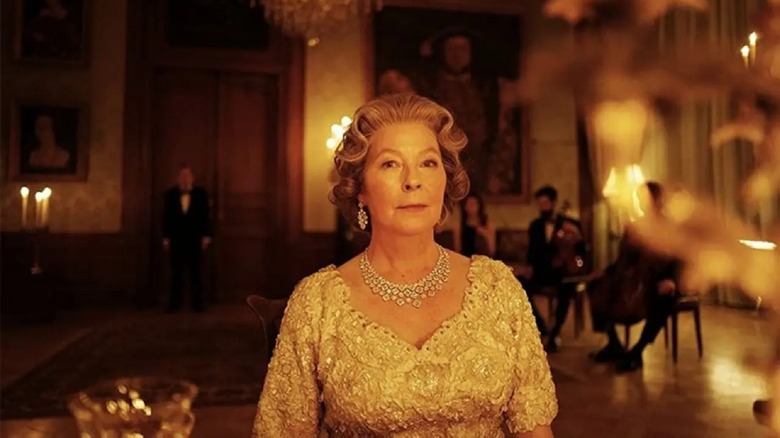Queen Elizabeth II's Best On-Screen Depictions
As Britain's longest-reigning monarch, Elizabeth II was one of the most well-known living figures, if not of all time. If you've seen Netflix's ultra-popular drama, "The Crown," then you probably know that Elizabeth was just 25 when she became the queen in 1952, following her father's death from a coronary thrombosis at the age of 56. Married to Prince Philip at the age of 21, the two remained married for over 70 decades until Philip's death in 2021. The pair had four children, including the new king, Charles.
From becoming the monarch at just 25 to leading Britain for multiple decades, into the 21st century, it's no surprise that there have been so many depictions about Queen Elizabeth II, beyond just "The Crown." Over the years, the queen has been depicted on-screen on several occasions, often by some of the most renowned actors working today. Here, we'll break down the best depictions for those of you curious about the late monarch and looking to watch her portrayed on screen.
Helen Mirren in The Queen
Up until "The Crown" premiered in 2016, the most popular portrayal of Queen Elizabeth II was undeniably that of Helen Mirren in 2006's "The Queen," for which she won an Oscar for her performance. The film follows the aftermath of Princess Diana's tragic death, in which the queen and the new prime minister, Tony Blair (Michael Sheen), must decide how the royals should publicly handle the death.
If her Oscar win didn't make it clear that her performance was hailed as brilliant up and down the board, one look at any review will reaffirm how good Mirren was in the role. Film critic Roger Ebert wrote, "Mirren is the key to it all ... What a masterful performance, built on suggestion, implication and understatement. Her queen in the end authorizes the inevitable state funeral, but it is a tribute to Mirren that we have lingering doubts about whether, objectively, it was the right thing."
Sarah Gadon in A Royal Night Out
In a lesser-known depiction, Sarah Gadon portrayed a teenage Elizabeth in the 2015 comedy-drama, "A Royal Night Out." Set in 1945, the film follows Elizabeth and her free-spirited sister Margaret (Bel Powley) as they venture out, with permission from their parents and in disguises, to join the celebrations of VE Day. However, it isn't long before the two girls sneak away from their chaperones.
Despite being a more frivolous premise than most other depictions of Queen Elizabeth II, "A Royal Night Out" fared quite well amongst critics — it even has a Certified Fresh rating on Rotten Tomatoes. It's refreshing to see a lighter side of the often-serious queen, and Gadon takes on the task with aplomb. Rex Reed of The Observer wrote, "'A Royal Night Out' is a film of enormous charm, texture, and good will, thanks largely to the three leads." Overall, if you want to see the queen more carefree while living a pre-monarch life, it's worth checking out "A Royal Night Out."
Jeannette Charles' many depictions
Known for her resemblance to the queen, Jeannette Charles has portrayed Elizabeth on multiple occasions, including in her first-ever acting credit on a TV movie called "Loriots Telecabinet." From there, Charles went on to depict the monarch in projects such as "Q6" from 1975 to 1980, the 1980 TV movie "The Queen Special," 1985's "National Lampoon's European Vacation" and 1988's "The Naked Gun: From the Files of Police Squad!" Charles also portrayed Queen Elizabeth in an episode of "Saturday Night Live" in 1977.
Charles is the only actor on this list — and, possibly, at all — who has made their career out of portraying the reigning monarch. If you have any interest in seeing how the public figure is depicted on screen, you should definitely check out at least a couple of Charles' projects. One of the more notable projects, such as "The Naked Gun" or her "SNL" appearance would likely be a good place to start. Her portrayals have even become such a staple of pop culture that it was quite the big news when Charles finally retired in 2014 (via the Express).
Claire Foy in The Crown
Claire Foy portrayed Queen Elizabeth II for the first two seasons of "The Crown," for a little over two decades of the monarch's life. Foy portrays Elizabeth through events such as her wedding to Philip (Matt Smith), Winston Churchill's (John Lithgow) time as prime minister, Philip's alleged affair, Margaret's (Vanessa Kirby) affair with Peter Townsend (Ben Miles), and the births of several of her children.
Foy's performance led to her winning the Emmy for lead actress in a drama series for the second season, and once again for guest actress in a drama series when Foy returned for one just scene in Season 3. Calling Foy's performance "fantastic" and "scintillating," Sonia Saraiya of Variety continued, "Foy cuts through what might be self-seriousness in the script to seize its emotional center. Her Elizabeth is both infinitely powerful and infinitely terrified, a woman who has no choice but to be what others put upon her."
As the first to portray Elizabeth in "The Crown," Foy lays the foundation — playing Elizabeth as a complicated woman, having to learn how to often choose her royal duties over her family ties — for the other two actors to build upon in later seasons.
Olivia Colman in The Crown
The next actor to take on Queen Elizabeth II in "The Crown" was Olivia Colman, who took over the role for Seasons 3 and 4 — while Imelda Staunton stepped in for Season 5. Colman portrays the Queen through events such as the death of Winston Churchill, Michael Fagan's break-in, and, of course, the early years of the marriage between Charles (Josh O'Connor) and Diana (Emma Corrin).
Colman's performance also led to plenty of award recognition — she also won the Emmy for lead actress in a drama series for the show's fourth season. Of her performance, Jen Chaney of Vulture wrote, "Colman's performance is a season-long exercise in extraordinary restraint that provides a profound payoff. When a family crisis finally does make Elizabeth lose it — or at least lose it to the extent she's capable — it's an extremely moving moment."
While Foy portrayed a queen still trying to find the balance between royal duties and familial duties, Colman presents an evolved Elizabeth who has a better grasp on the challenge and more often than not is quick to do what needs to be done as the queen. All in all, Colman's performance is just as captivating as Foy's.
Freya Wilson in The King's Speech
For her role as the young Princess Elizabeth in "The King's Speech," Freya Wilson prepared by listening to several speeches the eventual queen made as a child. This attention to detail pays off as Wilson creates an image of little Lilibet as a girl who never really got to be a girl.
The moment her Uncle David (Guy Pearce) abdicates his position as King Edward VIII, Elizabeth transforms from being a carefree child of wealth and privilege into a stoic, burdened with duty and purpose, just as her father (Colin Firth) has to evolve from the affable, shy Bertie to the commanding and competent King George VI. Even the real-life Queen herself reportedly liked the film. While Colin Firth was the obvious draw as the central character, the smaller roles, such as the pointed performance of Freya Wilson, added layered depth to the film as a whole, and Princess Elizabeth's newly acquired responsibilities also form the foundational motivation for Bertie to become a good role model as king.
Emma Thompson in Playhouse Presents, Walking the Dogs
In a single half-hour installment of a British anthology series "Playhouse Presents," Emma Thompson accomplishes just as much in her portrayal of Queen Elizabeth as Helen Mirren, Claire Foy, or Olivia Colman do in theirs — only with a lot less space to move. Her Elizabeth is diplomatic, she is thoughtful, she is skilled at hiding her emotions, and she is even-handed.
Inspired by actual events from 1982, Thompson's Elizabeth wakes up to find an intruder in her bedroom and uses what is undoubtedly a lifetime of training in the art of royal demeanor and tact to not panic, to assess the man before her and the situation he presents, and to deftly engage with him until security arrives. The beauty of the performance lies in the nuances that glide across Thompson's face, whispers of emotion, of reaction that are quickly contained and, if shared at all, expose only as much as the queen wants to be exposed.
Emilia Fox, Samantha Bond, Susan Jameson, Barbara Flynn, and Diana Quick in The Queen, The Life of a Monarch
Also known in the U.K. simply as "The Queen," the 2009 miniseries "The Queen, The Life of a Monarch" is like a precursor to "The Crown" in that, in each of its five episodes, the role of Queen Elizabeth II is played by a different actress as the narrative explores different pivotal moments across her reign and lifetime.
However, unlike the cast of "The Crown," these five actresses have only their single episodes to establish the queen's studied aplomb — a reliable constant for over 50 years of British society at the time — and the inevitable personality and priority changes that come with age and experience. In addition, the performances had to feel cohesive and consistent across the different eras. It was a daunting task in a compressed setting, and these five pros handled it beautifully.
Stella Gonet in Spencer
"Spencer" was a departure, a vehicle, and a triumph for star Kristen Stewart as the late, beloved Princess Diana, garnering her an Oscar nomination and several other accolades. However, Stewart's portrayal of Diana's fear, panic, and the untenable pressure she felt as a member of the royal family is impossible to appreciate without the performance of Stella Gonet as the queen.
Icy intimidation and a judgmental eye are the order of the day when in this Elizabeth's presence. Gonet's Queen is completely at ease with her authority and has no trouble wielding it to keep people in line. Contrarily, though, "she really did have a sense of humor," Gonet says when talking about the role. She allowed, however, that the monarch didn't have much of an appreciation for the arts and that people seemed to respect the image of her, but "they couldn't get too close." This certainly promoted a strain in the relationship she had with Diana's more open, sensitive, relatable nature. The movie hinges on that disconnect, and it's Gonet's chilling glare that cements it on the screen and makes the film so emotionally satisfying.
